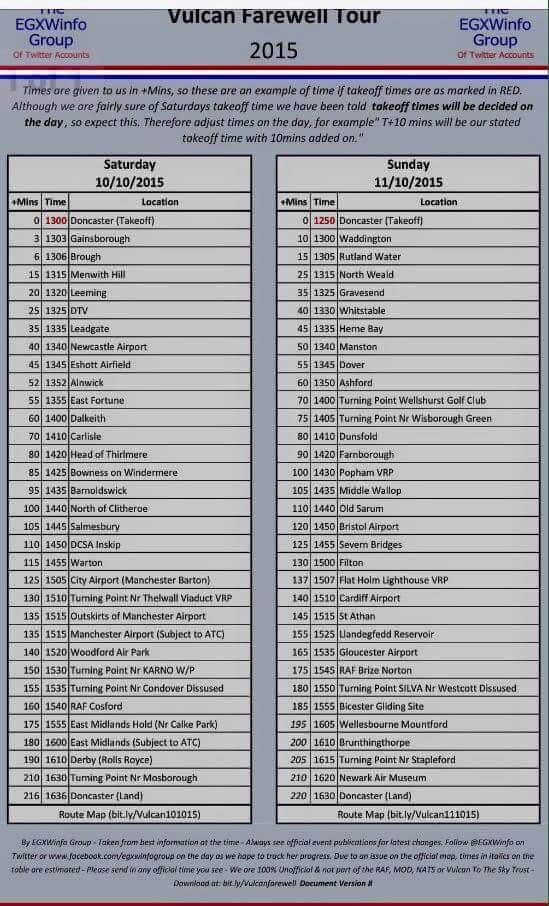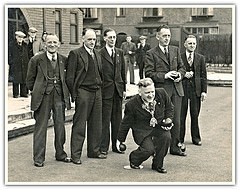The Lostock Hall Branch of the Royal British Legion are organising a visit to the National Memorial Arboretum on Sunday 28 February. Please check out the attached poster to find out more, or call 01772 464410 or e-mail: lostocklegion@gmail.com
Tag Archives: Parkfield Labour Club
Preston Remembers City tours
If you missed the launch of the Preston Remembers City tours in November, don’t worry as there’s another chance on Sunday 6 December. Three guided walks from 12noon will tell the fascinating stories of three very different Preston people and their experience of the First World War.
Free events, but please book a place:http://bit.ly/1To4xXq
PNE Carol Service
Looking Back Preston Fishergate
Live Music on at the Parkfield Labour Club December
| DECEMBER | |||
| SAT | 05 | GING-A-LING | Great duo from Liverpool |
| SUN | 06 | FAVE RUSSELL | Male vocal |
| SAT | 12 | EDDY MATRIX | Members request |
| SUN | 13 | DEANO | Great male vocalist |
| SAT | 19 | MICK NICK | Return visit as requested |
| THU | 24 | CHRISTMAS EVE | |
| MATT FISHER | Superb artiste | ||
| SUN | 27 | **STARNIGHT** | |
| DONNA ELSON | Top class act | ||
| THU | 31 | NEW YEARS EVE | |
| LISA MARIE Award winning artiste and ROBS Superb DISCO | |||
| Non members made welcome must sign in on night | |||
On behalf of your Chairrman Mr Jack Kay and his committee they wish you
a happy new year – Thank you
MEMBERS PLEASE NOTE Due lack of support there will be no artiste on Sundays from January 2016
MEMBERS ARE REQUESTED TO SHOW THEIR CARDS AS AND WHEN REQUIRED – THANK YOU
NON MEMBERS MADE WELCOME
COME ALONG AND ENJOY THIS CLUB BINGO STARTS AT 8PM EVERY SATURDAY & SUNDAY
DONT FORGET – Every Thursday night at 9pm it is eyes down bingo
Why not give us a visit
You will be made most welcome
We now have a pool table for members & guests
BIG SCREEN TV – SKY SPORTS AND BT SPORTS ON VERY LARGE SCREEN
THE PLACE TO WATCH ALL SPORTS EVERYONE WELCOME – NON MEMBERS PLEASE SIGN IN
ALL ARTISTE TO CONTACT R GARDNER CON-SEC ON MOB 07796290866
Artistes to arrive by 7.30pm – 7 days confirmation please
Do you require a function room for your parties, weddings meeting, etc
ring the club on 726490 to discuss your requirements.
Function rooms are available for large or small parties
Friday nights & mon-sun daytime, other nights to be discussed
Non members welcome
air conditioned throughout.
see notice board for coming events
BINGO – 8.45pm THURSDAY & 8pm SATURDAY AND SUNDAY
THWAITES AND MANY BOTTLED BEERS AT THE BEST PRICES AROUND
Remember Clocks Go Back
In October in the UK summertime officially ends, the clocks go back and we revert to Greenwich Mean Time again. The mornings get lighter and evenings darker.
The time changes on October 25 at 2:00 am which means you’ll have a shorter night out if you’re out clubbing until the wee hours but an extra hour in bed on Sunday morning if you like to be sensible. To remember which way to set your watch, there’s a useful (albeit slightly American) mnemonic: “spring forward, fall back”.
British Summer Time
2007 marked 100 years since British Summer Time was first proposed by William Willett. Changing the clocks for summer time is now an annual ritual in Britain and countries around the world. But why change the clocks, which way should they go, and whose idea was it in the first place?
William Willett saves the daylight, 1907–15
The idea of British Summer Time (BST), also known as Daylight Saving Time, was first proposed in Britain by a keen horse-rider, William Willett, who was incensed at the ‘waste’ of useful daylight first thing in the morning, during summer. Though the sun had been up for hours during his rides through the local woods in Chislehurst and Petts Wood, people were still asleep in bed.
Willett was not the first to propose such a scheme; in 1895 an entomologist in New Zealand, George Vernon Hudson, presented a paper to the Wellington Philosophical Society outlining a daylight saving scheme which was eventually trialled successfully in New Zealand in 1927.
In 1907 Willett published a pamphlet called The Waste of Daylight, outlining plans to encourage people out of bed earlier in summer by changing the time on the nation’s clocks. He spent the rest of his life fighting to get acceptance of his time-shifting scheme. He died in 1915 with the Government still refusing to back BST. But the following year, Germany introduced the system. Britain followed in May 1916, and we have been ‘changing the clocks’ ever since.
The first day of Summer Time, 1916
Britain first adopted William Willett’s Daylight Saving Time scheme in 1916, a few weeks after Germany. For years, the British Government had refused to introduce Daylight Saving Time, but by then, Britain and Germany were fighting each other in the First World War (1914-18), and any system that could save fuel and money was worth trying. The Summer Time Act of 1916 was quickly passed by Parliament and the first day of British Summer Time, 21 May 1916, was widely reported in the press.
Clocks and watches were very different from those we use today. Many clocks could not have their hands turned backwards without breaking the mechanism. Instead, owners had to put the clock forward by 11 hours when Summer Time came to an end. The Home Office put out special posters telling people how to reset their clocks to GMT, and national newspapers also gave advice.
Changing times, 1918–39
William Willett, the tireless champion of the Summer Time scheme, died in 1915. By the 1920s, however, he was becoming a posthumous hero, as more and more people backed his daylight-saving plan. Public money was raised to buy and preserve Petts Wood. This was partly to act as a living memorial to Willett, but mostly as local residents wanted to prevent building development encroaching on their green spaces. A sundial – keeping British Summer Time, not Greenwich Mean Time – was erected there in a clearing.
Willett had become an icon of daylight. A portrait was painted; a bronze bust was sculpted; a pub was named in his memory, and in 1931 a wax figure was unveiled at Madame Tussaud’s in London. But not everybody had come round to Willett’s way of thinking: over the subsequent years, dissenting voices were heard.
Permanent summer, 1968–71
In 1968, the clocks went forward as usual in March, but in the autumn, they did not return to Greenwich Mean Time. Britain had entered a three-year experiment, confusingly called British Standard Time, and stayed one hour ahead of Greenwich until 1971.
This was not the first experiment to shift the clocks in winter. In the Second World War (1939-45), Britain had adopted Double British Summer Time, with the clocks one hour ahead of Greenwich in winter and two hours ahead in summer.
When the British Standard Time experiment ended, the Home Office carried out an exhaustive review to find out whether it had been successful. The answer was both yes and no. There were ‘pros and cons’ to having the clocks forward and, on balance, the Government decided to return to the original British Summer Time.
A century of saving daylight, 1907–2007
Within a few years of its introduction, most countries reasonably north or south of the equator had adopted Daylight Saving Time. But it has been controversial since the day it was first proposed.
After a century of daylight saving, we still cannot agree on whether it is a good thing or not. When proposals to extend the system are occasionally made in Parliament, protest soon comes from those affected by its disadvantages. Daylight Saving Time tries to treat a complex network of symptoms with one solution. But not everybody sees it as a cure. So the debate continues.
Vulcan’s fly-past
Vulcan’s fly-past tribute to Stockport factory birthplace
The last flying Vulcan bomber aircraft will fly over the Greater Manchester factory where it was built as part of a farewell tour of the country.
The famous Cold War nuclear warplane is due to cross Woodford Aerodrome near Stockport, where it was made in the 1960s, at about 15:20 BST.
It will be grounded later this month after engineering backers withdrew support.
Huge crowds are expected to gather at vantage points to catch a last glimpse.
The bomber, introduced as part of the UK’s nuclear deterrent during the Cold War, saw action during the 1982 Falklands war.
A part of the RAF since 1952, the last remaining model left service in 1993, according to organisers Vulcan to the Sky.
https://www.google.com/maps/d/viewer?mid=zJoGZd3-Qg5U.k9_QAWQWnmes
Looking Back
PARKFIELD (Preston) INVITATION 16 PAIRS
PARKFIELD (Preston) INVITATION 16 PAIRS
24th October – 11am start
Practice from 10.30
Draw to be done on the green at 10.45
£50 a pair
£400 – winners
£200 – runners up
£100 – semis
£50 – last 8
GREG SMITH & RYAN PROSSER
OWEN JACKSON & NICK HUGHES
DAN PETCHER & JON PALMER
SIMON COUPE & GARY ELLIS
TOMMY KING & DARREN EDMONDSON
ANTHONY BRACKEN & GARETH HERBERT
WAYNE DITCHFIELD & CARL ARMITAGE
LEE KINGTON & CRAIG ROUND
JAMES HANSON & ASH TATTERSLEY
MIKE LEACH & JAMES BALL
BILLY SPEED & NICKY SHAW
IAN NICHOLSON & MARTIN GILPIN
CHRIS BARTON & PHIL LEE
JACK DYSON & ASHLEIGH DAYKIN
B.HARRIS & MATT FELLOWS
DAVID SCOTT & ANDREW TATE









.jpg)





